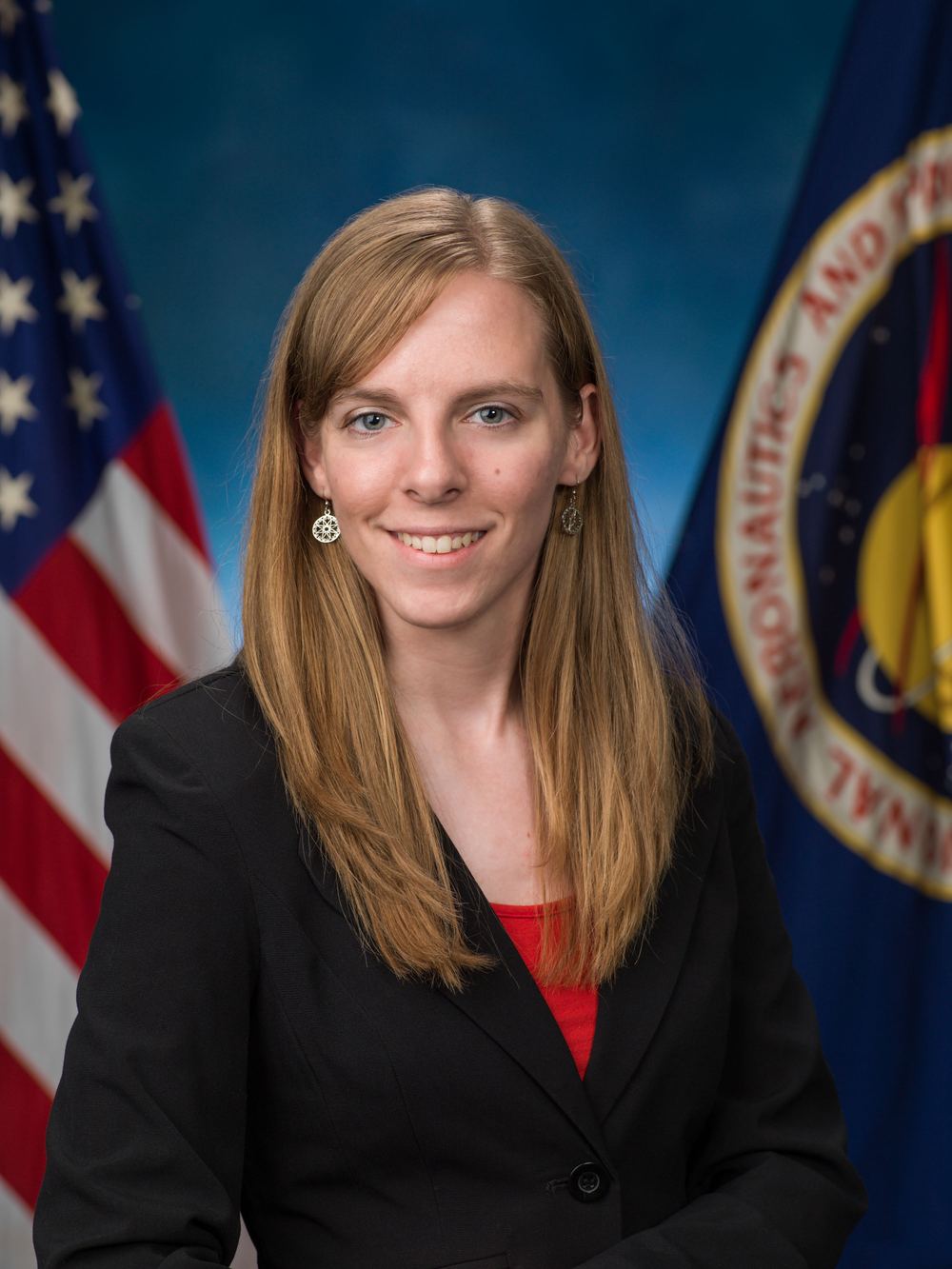The People of Johnson: Meet Katelyn Dvorsky, CRONUS Flight Controller for the International Space Station
With a title like CRONUS (Communication Radio Frequency Onboard Network Utilization Specialist) flight controller for the International Space Station, you might be surprised to learn that Katelyn Dvorsky spends the majority of her time supporting Gateway’s development.
As a matrixed employee within NASA's FOD (Flight Operations Directorate), Dvorsky fills several important roles. In addition to being a flight controller, she is the subject matter expert for C2V2 – the system the space station uses to communicate with cargo and commercial vehicles – and she is the lead for flight operations integration with the Gateway Vehicle Systems Manager (VSM), which is the main computer that will operate Gateway autonomously. In the latter role, Dvorsky collaborates with the engineers who are writing the VSM software to ensure the system will provide FOD with the required operational capabilities.

Dvorsky has been in this matrixed position for about one year, but she became a full-time NASA employee in 2015, after completing three rotations in the agency’s Pathways Program. Her first rotation was with the CRONUS group, which manages data transfers and communications between Earth and the space station, ensures the orbiting laboratory’s computer network system is functioning properly, and maintains the station’s caution and warning system.
“Flight controller was never on my radar, but I really enjoyed it,” Dvorsky said. She planned to pursue a mechanical engineering career at NASA after graduating from the University of Dayton in Dayton, Ohio, with a bachelor’s degree in the subject, but her Pathways experience prompted a return to the CRONUS group instead.
Dvorsky’s determination to join the NASA team stemmed from a love of math and science, a desire to help people, and an inspiring family trip to Florida that included watching a space shuttle launch. She was also familiar with the engineering field because that was her father’s profession. “From there, things started falling into place,” she said.

Since joining the NASA team, Dvorsky has evolved along with the agency. “Each step I’ve taken since I joined the CRONUS group didn’t exist when I first started,” Dvorsky said. “As NASA has developed different programs, these new opportunities have come up and I’ve been redirected different places, and I really like where it’s gotten me.” Her leading role on C2V2 is one example. NASA started deploying the system in 2015 but ran into an issue shortly after Dvorsky completed her flight controller training. Since there was a delay in Dvorsky’s flight controller class being assigned to sit console, she reached out to colleagues to ask what she could help with in the meantime. One team member responded that they needed help ensuring the new system could talk to commercial vehicles. “I said, I have no idea what you’re talking about, but it sounds interesting and I’m happy to help,” she said. “Then I eventually became the lead for that system.”
newArticle.png?generation=1695223994096341)
Of the various roles Dvorsky has filled to date, her current work on the Gateway VSM has been one of her favorites. She considers herself fortunate to be part of the small portion of NASA’s workforce that gets to work on developing a completely new program. “It's very new to everybody, but it's exciting at the same time,” Dvorsky said. “And it kind of scratches that itch for me of being more on the engineering side while using my experience from flight operations.”
An openness to new experiences and fresh perspectives is one trait Dvorsky believes is key to professional success, and to innovation. The Gateway VSM team, for example, wants to incorporate lessons learned from the International Space Station into the system’s design, but they also do not want to assume that because something was done one way in the past, it should be done the same way in the future. “I try to ask, what did we learn from past designs that we want to incorporate and what did we learn that we don't want to incorporate?” Dvorsky said. “And, what's the better way to do it now that we have the opportunity?”
newArticle.png?generation=1695224116403411)
This flexibility and forward thinking are also appreciated by Dvorsky’s colleagues. “She is not afraid to step outside of her wheelhouse and provide insight into many different problems and design areas,” said one of her peers. “She is very goal-driven and problem-oriented instead of looking to the past for solutions. She understands that new technology is needed to address the space industry’s future challenges and is not afraid to encourage its development here at NASA.”
To Dvorsky, those challenges include ensuring agency processes are nimble enough to keep up with rapid technological advancements. “It’s difficult for anyone to keep up with, let alone a program that’s integrating the tech into a space vehicle with many requirements,” she said. “By the time you get through test and verification processes, the next version of that technology may be available.” Dvorsky said there must be a balance between using the most up-to-date technology and safety. Agile processes can help teams make quick tech improvements as they become available and meet safety requirements.
While navigating these challenges, Dvorsky encourages colleagues to be honest when they do not know something, to admit when they are wrong, and to ask for help when they need it. “Speaking up and saying those things helps build people’s confidence in you and their respect for you,” she said. “It helps team members stay on the same page and provides an opportunity to evaluate progress, too.”
Dvorsky also believes in the power of a positive attitude and collaborative mindset, especially in team settings. She noted that flight controllers benefit from peer training and mentoring, in which classmates help each other study for their certification and support classes coming in after them.
“Try to look for ways to help your team members,” she said. “Where can you help an individual? Where does the team as a whole need help? That way everyone can move forward together.”







